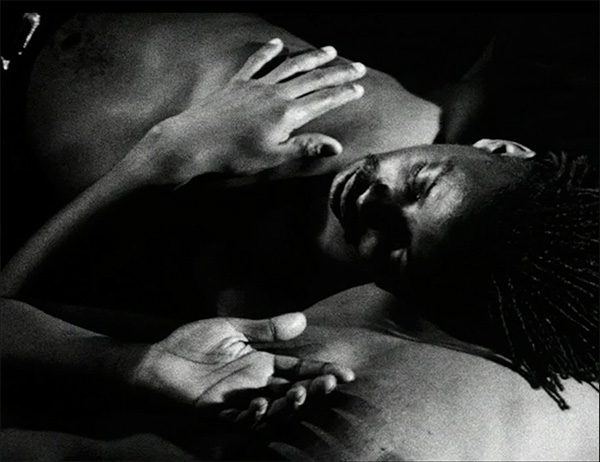The innovative, rarely seen essay film Twilight City is structured around a fictional letter that a young woman, Olivia, writes to her mother Eugenia, who lives in Dominica. Olivia’s letter becomes a profound meditation on London as a liminal space, the inner lives of migrant communities, cultural belonging, the influx of foreign capital, the struggles of LGBTQ+ communities, and everyday people’s lives caught in Thatcher’s push to transform the city into a citadel of finance and global power. (Reece Auguiste, 1989, DCP, 52 minutes)
The artist Donald Rodney was a leading figure of the UK’s Black Art Group and Black Arts Movement of the 1980s, and one of its most innovative practitioners. He deployed appropriated media images to explore the representations of masculinity, racial identity and belonging. An acute sufferer of sickle cell anemia, Rodney used his illness in later years as a metaphor to examine, race, disability, and marginalization. Three Songs on Pain, Time, and Light is a wide-ranging portrait of the artist shortly before his untimely death in 1998 at 36 years old. (Trevor Mathieson and Eddie George, 1993, DCP, 25 minutes)
In 1933 the writer J.B. Priestley visited Liverpool and wrote about the cities mixed raced families in his book English Journey. Sixty years later, John Akomfrah takes his own journey to retrace Priestley’s steps and to explore what it means to be Black and British in a northern English city. A Touch of the Tar Brush was broadcast on the BBC as part of the television series This is England. (John Akomfrah, 1991, 40 minutes)
Part of the film series Burning Illusions: British Film and Thatcherism, engaging questions of cinematic representations of race, class, and sexuality through examples of moving images rooted in Britain's contested social and political histories.
